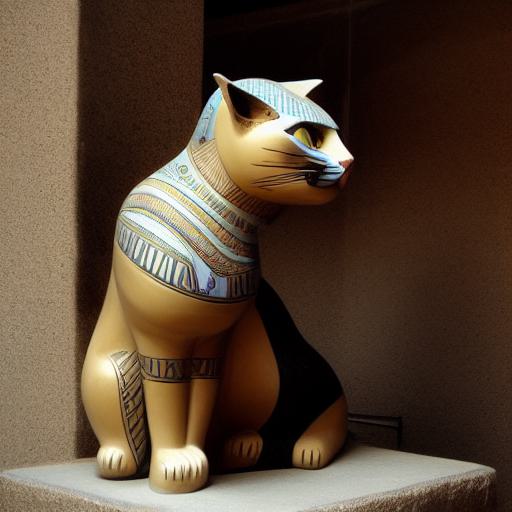Sculpture craft art
Sculpture craft is a form of visual art that involves the creation of three-dimensional objects through the use of various materials and techniques. Sculpture can be made from a variety of materials, including stone, wood, metal, clay, glass, and even found objects.
The process of creating a sculpture typically involves a combination of techniques, including carving, modeling, casting, and assembling. Carving involves the removal of material from a solid block to create a specific shape or form, while modeling involves the addition of material to create a form, typically using materials like clay or wax. Casting involves creating a mold of a form and then pouring in a liquid material to create a replica, and assembling involves putting together separate pieces to create a final form.
Origin of sculpture craft
Sculpture craft can be traced back to ancient times and has been an important form of artistic expression throughout history. Sculptures can take on a variety of styles, from representational to abstract, and can range in size from small, handheld objects to massive installations.
Sculpture craft requires a combination of technical skill, creativity, and imagination, as the artist must not only understand how to work with their chosen materials but also envision and bring to life a three-dimensional form. Sculpture can be used to convey a wide range of emotions, ideas, and messages, and is often commissioned for public spaces, such as parks, museums, and plazas, as well as for private collections.
What is AI-generated art?
AI-generated art is created using artificial intelligence algorithms, resulting in faster and more efficient image creation compared to traditional art-making methods. This technique allows for experimenting with diverse styles and techniques to create designs that fit specific requirements. It supports diversity and inclusivity in the art world by providing artists from different backgrounds with a platform to express their unique experiences and perspectives.
To use AI-generated art in projects, designers can use online tools like Visual Paradigm Online. Artists can also create their own AI-generated art and explore various creative possibilities offered by this technology on websites such as Stable Diffusion, Midjourney, and Dalle 2.
How to create this prompt?
The AI image prompt describes a statue of a cat in the style of Egyptian art, attributed to the artist Kanō Tan’yū, which will influence the style and design of the final image. Egyptian art is characterized by its use of hieroglyphics, symbolism, and highly stylized representations of people and animals. The mention of Kanō Tan’yū, a Japanese artist who worked in the 17th century, could also suggest a fusion of Japanese and Egyptian art styles.
The prompt further specifies that the statue should be a folk art piece, which implies that the sculpture should have a traditional, cultural or historical significance. Folk art often incorporates symbolism, and cultural elements into its designs, and emphasizes the use of simple materials and techniques. This aspect of the prompt will affect the design of the statue and could influence the choice of materials and the level of detail in the sculpture.
The prompt also references the goddess Bastet, an important deity in ancient Egyptian mythology who was often depicted as a cat or with the head of a cat. This will influence the pose and expression of the cat statue and the depiction of the goddess in the final image.
The use of Stable Diffusion, Midjourney, Dalle 2 or other websites to generate the AI image will require careful consideration of the specifics of the prompt, including the style, symbolism, and historical references. To create an effective AI image prompt, it is important to have a clear idea of the subject matter, style, and intended audience for the image. This may involve researching different art styles, cultural traditions, or historical references to inform the prompt.
Additionally, the use of specific artist names, such as Kanō Tan’yū, or references to cultural icons, like Bastet, can help to refine the image and guide the AI model in creating an image that matches the desired style and aesthetic. By providing clear and specific details in the AI image prompt, it is possible to create an AI-generated


